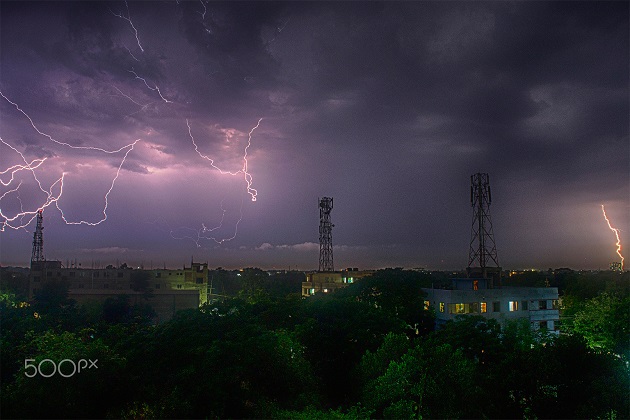
Over several decades, Bangladesh has seen an increase in the frequency of lightnings and, consequently, an increase in fatalities resulting from lightning strikes.
Researchers have linked the increased frequency of lightning with climate change. As for the increased death toll, they blame the country’s inadequate early warning systems and big tree coverage.
According to the Department of Disaster Management in Bangladesh, between 2011 and 2020, lightning strikes claimed the lives of 2,164 people, or nearly four people every week. However, data from a Bangladeshi NGO, Foundation for Disaster Forum, shows at least 3,273 individuals died due to lightning strikes between 2010 and 2021, with 2021 seeing the highest number — 363 deaths.
Many more casualties remain unreported, according to the Foundation of Disaster Forum, which works on disaster management in the country.
The people most at risk from lightning strikes work in monsoon-related income-generating activities, such as fishing and farming in open agricultural fields, like growing rice. In recent years, as the occurrence of lightnings has increased, they have become a major cause of death during the months of March, April and May, which is the kalbaishakhi season, a pre-monsoon storm that develops in the Bangladeshi region.
Lightning related death toll has been increasing in Bangladesh due to a lack of awareness among people with such occupations, said Gawher Nayeem Wahra, a disaster management expert. He added that the death toll could be avoided if the country’s Met department could disseminate proper early warnings of thunderbolts in due time.
“[The] lack of adequate big trees in the Haor Basin could be a cause [for] such kind of rising tendency of lightnings in the region,” Nayeem Wahra observed, mentioning that many people are losing their lives from lightning strikes in Bangladesh’s north and northeast regions (Greater Mymensingh and Haor areas), where most of the wetlands are located.
The government’s ineffectual moves
Considering the issue to be of serious concern, Bangladesh’s government declared lightning a natural disaster in 2016 and started planning methods to reduce lightning related incidents.
As part of this, the government has been taking steps to prevent lightning striking humans and settlements by planting around 5 million palm trees alongside roadways. These trees would act as lightning rods if there are no towering buildings nearby.
Since the palm trees require time to reach their full height, to see any benefits from the tree-planting project will take some time. Meanwhile, inspired by nearby countries like Nepal, which installed lightning arresters in the open fields with less tree coverage, we are planning to do so, said Md Mizanur Rahman, director general of the Department of Disaster Management.
Additionally, in late 2023, the government started another project installing lightning arresters and building suitable shelters to reduce public vulnerability and the number of fatalities.
In addition, to anticipate lightning and thunderstorms better, the Bangladesh Meteorological Department (BMD) has implemented an early-warning system called the High-Impact Weather Assessment Toolkit (HIWAT). It claims that this toolkit, developed in partnership with NASA, will send out cautionary notifications to the public up to 54 hours before a lightning strike.
Regarding the initiatives, Ahsan Uddin Ahmed, a researcher on atmospheric science, said the death toll and injuries could be reduced if the Met department sends out efficient early warnings about thunderstorms and suggest precautionary measures.
He took Singapore’s efficient early warning systems as an example, where warnings issued by the meteorological service are intended to give short-term, that is within one to a few hours, notice of the likelihood of thunderstorms affecting any part of the country. Once issued, the warning is broadcast over radio and television and announced on the meteorological service’s website.
However, Rubayet Kabir, a meteorologist at the Bangladesh Met Department, said that the department has been releasing thunderbolt warnings regularly, but the people are not fully aware of how it works. He added that the people in the country are mainly concerned about cyclonic events, thus following the early warnings and preparation measures for cyclones only.
Regarding this, Ahsan Uddin Ahmed said that the complicated terms and words used in the Met department’s early warning system is the main barrier as the common people find it hard to understand.
(This article is republished from Mongabay under Creative Commons License)
Abu Siddique is Mongabay’s Contributing Editor for Bangladesh. He has worked for several of the leading national dailies including Dhaka Tribune, Daily Sun and The Business Standard, and has explored the remotest corners of the country in search of stories.


